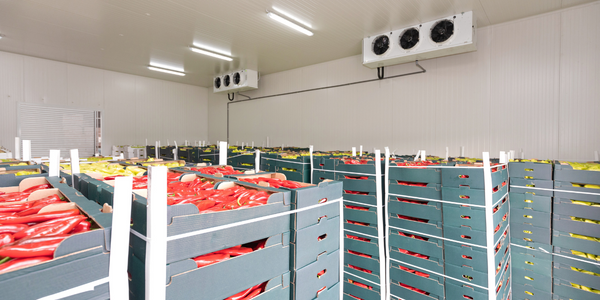Download PDF
Digital Twin for Sustainable Energy: Enhancing Fusion Powerplant's Lifetime Value
Technology Category
- Analytics & Modeling - Digital Twin / Simulation
- Functional Applications - Computerized Maintenance Management Systems (CMMS)
Applicable Industries
- Electrical Grids
- Transportation
Applicable Functions
- Maintenance
- Product Research & Development
Use Cases
- Digital Twin
- Virtual Prototyping & Product Testing
Services
- System Integration
- Testing & Certification
The Challenge
Assystem, an international engineering and digital services group, was contracted by the United Kingdom Atomic Energy Authority (UKAEA) to develop physics-based digital twins for their operational fusion powerplants. The challenge was that fusion powerplants required complex digital simulation models during the design assessment phase. The inspection and maintenance intervals and total life of these powerplants were defined based on the expected loading on the as-designed model, which often differed from the actual loads the plant was subjected to. This discrepancy provided a scope for programs aimed at improving the plant’s lifetime value or quantifying the effects of higher-than-expected usage. Assystem wanted to leverage the expensive design models to create a digital twin by inputting the sensor data that was livestreamed from the plant. This would help engineers understand the plant’s structural integrity and further optimize inspection and maintenance schedules.
About The Customer
Assystem is an international engineering and digital services group that focuses on low-carbon projects to accelerate the transition to clean energy. The group is committed to the development of decarbonised electricity, including fusion energy, renewables, and electricity grids, and clean hydrogen. Assystem is also driving the use of decarbonised electricity in industrial sectors such as transportation. The group was contracted by the United Kingdom Atomic Energy Authority (UKAEA) to work on fusion energy-related programs, particularly the development of physics-based digital twins for their operational powerplants.
The Solution
The solution involved the use of the hosted version of Altair SmartWorks IoT, which formed the backbone and analytic front end of the solution. It allowed automation through serverless backend functions, data storage, edge connectivity to the operational systems, and advanced dashboarding capabilities that provided users with immediate insight. The pilot phase used synthetic data to simulate the real-time data stream from operating plants into the IoT platform. Defined Python scripts triggered related physics models, which then processed the data and returned the results back to the IoT platform. A configured front end provided visual analytics highlighting event repercussions for better decision-making. Finite element analysis (FEA) models from multiple vendors, a commercial-grade fatigue analysis solver, and real-time weather data from OpenWeather were all connected to the IoT platform. The Simulation Process Data Management (SPDM) system at UKAEA was linked to store the data models. Email and SMS were also integrated to alert the operators to exceptional events.
Operational Impact
Related Case Studies.

Case Study
Airport SCADA Systems Improve Service Levels
Modern airports are one of the busiest environments on Earth and rely on process automation equipment to ensure service operators achieve their KPIs. Increasingly airport SCADA systems are being used to control all aspects of the operation and associated facilities. This is because unplanned system downtime can cost dearly, both in terms of reduced revenues and the associated loss of customer satisfaction due to inevitable travel inconvenience and disruption.

Case Study
IoT-based Fleet Intelligence Innovation
Speed to market is precious for DRVR, a rapidly growing start-up company. With a business model dependent on reliable mobile data, managers were spending their lives trying to negotiate data roaming deals with mobile network operators in different countries. And, even then, service quality was a constant concern.

Case Study
Digitize Railway with Deutsche Bahn
To reduce maintenance costs and delay-causing failures for Deutsche Bahn. They need manual measurements by a position measurement system based on custom-made MEMS sensor clusters, which allow autonomous and continuous monitoring with wireless data transmission and long battery. They were looking for data pre-processing solution in the sensor and machine learning algorithms in the cloud so as to detect critical wear.

Case Study
Cold Chain Transportation and Refrigerated Fleet Management System
1) Create a digital connected transportation solution to retrofit cold chain trailers with real-time tracking and controls. 2) Prevent multi-million dollar losses due to theft or spoilage. 3) Deliver a digital chain-of-custody solution for door to door load monitoring and security. 4) Provide a trusted multi-fleet solution in a single application with granular data and access controls.

Case Study
Vehicle Fleet Analytics
Organizations frequently implement a maintenance strategy for their fleets of vehicles using a combination of time and usage based maintenance schedules. While effective as a whole, time and usage based schedules do not take into account driving patterns, environmental factors, and sensors currently deployed within the vehicle measuring crank voltage, ignition voltage, and acceleration, all of which have a significant influence on the overall health of the vehicle.In a typical fleet, a large percentage of road calls are related to electrical failure, with battery failure being a common cause. Battery failures result in unmet service agreement levels and costly re-adjustment of scheduled to provide replacement vehicles. To reduce the impact of unplanned maintenance, the transportation logistics company was interested in a trial of C3 Vehicle Fleet Analytics.

Case Study
3M Gains Real-Time Insight with Cloud Solution
The company has a long track record of innovative technology solutions. For example, 3M helps its customers optimize parking operations by automating fee collection and other processes. To improve support for this rapidly expanding segment, 3M needed to automate its own data collection and reporting. The company had recently purchased the assets of parking, tolling, and automatic license plate reader businesses, and required better insight into these acquisitions. Chad Reed, Global Business Manager for 3M Parking Systems, says, “With thousands of installations across the world, we couldn’t keep track of our software and hardware deployments, which made it difficult to understand our market penetration.” 3M wanted a tracking application that sales staff could use to get real-time information about the type and location of 3M products in parking lots and garages. So that it could be used on-site with potential customers, the solution would have to provide access to data anytime, anywhere, and from an array of mobile devices. Jason Fox, Mobile Application Architect at 3M, upped the ante by volunteering to deliver the new app in one weekend. For Fox and his team, these requirements meant turning to the cloud instead of an on-premises datacenter. “My first thought was to go directly to the cloud because we needed to provide access not only to our salespeople, but to resellers who didn’t have access to our internal network,” says Fox. “The cloud just seemed like a logical choice.”





